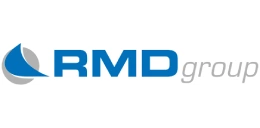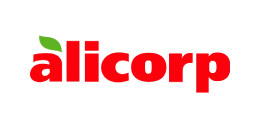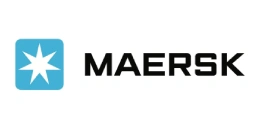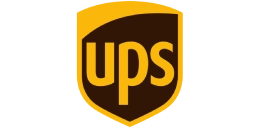Cost Model for Copper Tube Production: A Feasibility Study for New Investment
_11zon.webp)
What is Copper Tube?
Copper tubes are cylindrical hollow goods consisting mainly of purified copper, which are highly prized for their high thermal conductivity, corrosion resistance, ductility, and antimicrobial qualities. They are produced by processes like casting, extrusion, and drawing, which provide accurate dimensions and clean internal surfaces.
Key Applications Across Industries:
Copper tubes are universally applied across various industries based on their capacity to handle high temperatures and pressures, and thus they play a vital role in plumbing systems, HVACR (heating, ventilation, air conditioning, and refrigeration), medical gas distribution, and industrial fluid transfer. Copper tubes are used in plumbing because of their longevity, simplicity of installation, and inherent resistance to biofouling. In HVAC applications, they perform a vital function in heat exchangers, condensers, and evaporators, facilitating effective thermal transfer. Moreover, the recyclability and high residual value of copper further augment its status as a sustainable material option. With the increasing worldwide focus on energy efficiency, secure water supply, and sustainable construction, copper tubes continue to be essential material in conventional and next-generation applications.
What the Expert Says: Market Overview & Growth Drivers
The global copper pipes and tubes market size reached 5.02 Million Tons in 2024. Looking forward, IMARC Group estimates the market to reach 6.55 Million Tons by 2033, exhibiting a CAGR of 3.00% from 2025-2033. The copper tube industry is majorly propelled by the growing construction industry, where demand for robust and efficient plumbing and HVAC systems keeps improving, especially in developing economies with high-speed urbanization.
Expansion in the HVACR industry, spurred by the growth in energy-efficient cooling applications and government regulations for building efficiency, further drives copper tube deployment. In medicine, high safety standards for medical gas pipelines ensure steady demand, as the antimicrobial and non-reactive nature of copper ensures it is a chosen material. The industrial application in power generation, desalination plants, and heat exchangers also provides high consumption levels. Furthermore, the trend toward sustainable material usage worldwide favors copper consumption, considering its recyclability and lower environmental impact over plastics. Market expansion is also supported by government projects for infrastructure and upgrading of existing buildings with new piping systems. Nevertheless, volatility of copper as a raw material continues to be an issue, which leads manufacturers to streamline supply chains and implement cost-effective production processes.
Case Study on Cost Model of Copper Tube Manufacturing Plant:
Objective
One of our clients reached out to us to conduct a feasibility study for setting up a large-scale copper tube manufacturing plant.
IMARC Approach: Comprehensive Financial Feasibility
We developed a comprehensive financial model for the setup and operation of a proposed copper tube manufacturing plant in India. This plant is designed to produce 10,000 tons of copper tube annually.
Manufacturing Process: The production of copper tubes starts with the preparation of raw materials, where copper cathodes of high purity (99.90–99.99%) and copper-phosphate alloys are cleaned and melted in furnaces at 1100–1200°C in protected atmospheres to avoid oxidation. The molten copper is then cast into a solid billet or directly into hollow mother tubes through centrifugal or direct chill casting. Solid billets are pierced with a rotary piercer to form a hollow core. Secondly, the mother tubes or billets are then subjected to extrusion, where they are pushed through mandrel contained dies to create seamless tubes of the same dimensions. These tubes are then further processed in cold drawing to decrease diameter and thickness of the walls and increase strength and surface finish and then followed by annealing (400–700°C) to give back ductility. After annealing, the tubes are pickled and cleaned in acid baths to eliminate oxide scales. The tubes are straightened, cut to desired sizes or coils, and inspected and tested (dimensional inspection, eddy current, tensile, and hydrostatic testing) in accordance with ASTM/EN specifications. The last step is packing and shipping them in protective materials for secure transportation for use in plumbing, HVAC, medical, and industrial systems.
_11zon.webp)
Get a Tailored Feasibility Report for Your Project Request Sample
Mass Balance and Raw Material Required: The primary raw materials used in the copper tube producing plant are copper cathode, phosphorus copper alloy, lubricant, cleaning solvent (acetone), graphite flake, and nitrogen gas. For a plant producing 1 ton of copper tube, 1.015 ton of copper cathode, 0.003 tons of phosphorus copper alloy, 0.003 ton of lubricant, 0.008 ton of cleaning solvent (acetone), 0.001 ton of graphite flake, and 0.002 ton of nitrogen gas is required.
Machineries Required:
- 92×25 Horizontal continuous melting and casting furnace
- XP-90 Surface milling machine
- XG-90 Planetary rolling mill
- LHB12-10 Double Cascade Drawing Machine
- SB-220 spinner block
- FRJ400 Level winding machine
- LBDC40-8 Drawing machine with length cutting
- DC-20 Straightening and Cutting Machine
- Light annealing machine for finished straight tube
- Spare parts for all the main machines
- 12 Month Spare Parts
- Tool Mould
- List of Oil Media
- Main equipment installation and commissioning expenses
- Maintenance of Working Equipment
- Diesel Generator
- Compressed air correlation
- Stock frame (including stock frame spreader)
- Laboratory testing instrument
Techno-Commercial Parameter:
- Capital Investment (CapEx): Capital expenditure (CapEx) in a manufacturing plant includes various investments essential for its setup and long-term operations. It covers machinery and equipment costs, including procurement, installation, and commissioning. Civil works expenses involve land development, factory construction, and infrastructure setup. Utilities such as power, water supply, and HVAC systems are also significant. Additionally, material handling systems, automation, environmental compliance, and safety measures are key components. Other expenditures include IT infrastructure, security systems, and office essentials, ensuring operational efficiency and business growth.
- Operating Expenditure (OpEx): Operating expenditure is the cost incurred to operate a manufacturing plant effectively. Opex in a manufacturing plant typically includes the cost of raw materials, utilities, depreciation, taxes, packing cost, transportation cost, and repairs and maintenance. The operating expenses are part of the cost structure of a manufacturing plant and have a significant effect on profitability and efficiency. Effective control of these costs is necessary for maintaining competitiveness and growth.
.webp)
- Profitability Analysis Year on Year Basis: The proposed copper tube plant, with a capacity of 10,000 tons of copper tube annually, achieved an impressive revenue of INR 6.3 billion in its first year. We assisted our client in developing a detailed cost model, which projects steady growth, with revenue rising throughout the projected period. Moreover, gross profit margins improve from 6.7% to 7.6% by year 5, and net profit rises from 4.1% to 5.3%, highlighting strong financial viability and profitability.
.webp)
Conclusion & IMARC's Impact:
Our financial model for the copper tube manufacturing plant was meticulously developed to meet the client’s objectives, providing an in-depth analysis of production costs, including raw materials, manufacturing, capital expenditure, and operational expenses. By addressing the specific requirements of producing 10,000 tons of copper tube annually, we successfully identified key cost drivers and projected profitability, considering market trends, inflation, and potential fluctuations in raw material prices. This comprehensive financial model equipped the client with valuable insights into strategic decision-making, demonstrating our commitment to delivering high-quality, client-focused solutions that ensure the long-term success of large-scale manufacturing ventures.
Latest News and Developments:
- In July 2025, Mueller Streamline Co. announced that it will invest over US$ 7 million to expand its Wynne, Arkansas, manufacturing facility. Over a two-year period, the expansion is anticipated to generate 60 new jobs.
- In July 2025, Adani Enterprises announced selling MetTube 50% of its subsidiary, Kutch Copper Tubes Ltd. Adani Enterprises Limited (AEL) would also purchase a 50% share in MetTube Copper India Pvt. Ltd., a fully-owned subsidiary of MetTube, at the same time. The collaboration seeks to drastically lessen India's reliance on imported copper tubes.
- In January 2025, Wieland, a top supplier of premium copper and copper alloy solutions worldwide, announced the groundbreaking ceremony for its historic $500 million capital investment to modernise, expand, and re-equip its East Alton, Illinois, factory.
Why Choose IMARC:
IMARC's Financial Model Expertise: Helping Our Clients Explore Industry Economics
IMARC is a global market research company that offers a wide range of services, including market entry and expansion, market entry and opportunity assessment, competitive intelligence and benchmarking, procurement research, pricing and cost research, regulatory approvals and licensing, factory setup, factory auditing, company incorporation, incubation services, recruitment services, marketing and sales.
Under our factory setup services, we assist our clients in exploring the feasibility of their plants by providing comprehensive financial modeling. Additionally, we offer end-to-end consultation for setting up a plant in India or abroad. Our financial modeling includes an analysis of capital expenditure (CapEx) required to establish the manufacturing facility, covering costs such as land acquisition, building infrastructure, purchasing high-tech production equipment, and installation. Furthermore, the layout and design of the factory significantly influence operational efficiency, energy consumption, and labor productivity, all of which impact long-term operational expenditure (OpEx). So, every parameter is covered in the analysis.
At IMARC, we leverage our comprehensive market research expertise to support companies in every aspect of their business journey, from market entry and expansion to operational efficiency and innovation. By integrating our factory setup services with our deep knowledge of industry dynamics, we empower our clients to not only establish manufacturing facilities but also strategically position themselves in highly competitive markets. Our financial modeling and end-to-end consultation services ensure that clients can explore the feasibility of their plant setups while also gaining insights into competitors' strategies, technological advancements, and regulatory landscapes. This holistic approach enables our clients to make informed decisions, optimize their operations, and align with sustainable practices, ultimately driving long-term success and growth.
Our Clients
Contact Us
Have a question or need assistance?
Please complete the form with your inquiry or reach out to us at
Phone Number
+91-120-433-0800+1-201-971-6302
+44-753-714-6104










